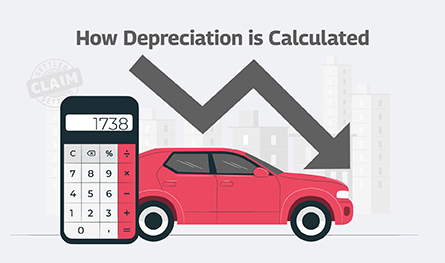How You Can Plan Your Retirement With Life Insurance?
.png)
Planning for retirement is important. But if you fail to do so due to financial constraints, you can use your life insurance plan as your retirement security. Want to know how? Read the post below.
.png)
Among the many investment options available, life insurance is a plan that allows the investor or the insured people to enjoy the dual benefits of saving for long-term as well as the security of insurance. However, to gain from the long-term investment, it is important for a person to invest carefully. Retirement and pension plans are crafted particularly to benefit individuals with their needs post retirement. So, if you are looking for a cost-efficient retirement investment option you can purchase a reasonably priced life insurance plan that suits your budget. It will work both as a savings plan as well as offer you enough capital during your retirement. This plan will also aid you in saving significant money on premiums, which can be used to invest in other financial opportunities to create extra returns.
Further, since most of the high-return investment plans pose substantial risks. Hence, the best thing is to buy a suitable life insurance policy to start your retirement saving plans.
In this post, we are talking about the various kinds of life insurance policies that you may consider for your retirement planning.
But before that let us give you a brief understanding on what is life insurance or the life insurance meaning, especially to enlighten the people who are new to the subject.
Life insurance is a plan to insure your life where you as the policyholder pay a particular premium annually to the insurance company from which you buy the plan. In return, the insurer promises a sum of money offered to the nominee of the insured if he/she dies during the term of the policy.
3 Life insurance plans that work for your retirement planning
Here is a list of different types of life insurance policies that serve you as best economic alternatives to support you in your retirement planning:
1. Whole Life Insurance plans
Whole Life Insurance Plans are the ones that offer coverage to the insured individuals for the rest of their life if they continue to make payment of the policy premium on time. Here, if the policyholder survives the term of the plan they receive maturity benefits, while if they die during the policy duration the nominee receives death benefit. Once the premium payment duration of the whole life insurance policy is over, the insured receives regular payouts and is also allowed to make partial withdrawals that can be used for your post retirement plans.
2. Endowment Plans
An endowment policy is a simple type of life insurance plan that pays a lump sum amount at the time of maturity or when the insured individual dies. This plan can be used to create a saving amount that is entirely risk-free. Further, it also allows financial security to your family if you happen to die due to any untoward situation. Also, you can gradually earn extra bonuses that are collectively paid at the time of maturity or to the nominee in case of death of the policyholder. Thus, an endowment plan can be considered as one of the best retirement plans for your post retirement period.
3. Unit Linked Insurance Plans (ULIPs)
A ULIP is another great combination offering dual benefits of insurance and investment for long-term savings. In case of ULIP, the premium you pay for this plan is divided equally in two parts, one of which is secured for life insurance and the other is invested in different funds. The investment portion of your payment is distributed depending on your risk tolerance in different investments such as bonds, stocks, hybrid funds etc.
So, the above mentioned plans and many more policies are there that can be used as tools to plan your retirement.
Let us now discuss some tips that may help you in planning your retirement.
Tips to help while planning for retirement
Here are some points that you may keep in mind for making better decisions while buying policies for your retirement.
- List out your regular current expenses and predictable future expenses – Though calculating all the expenses may not be possible as there are many unforeseen costs that may arise suddenly. But you can still make a list of the current and predictable needs and their costs. You may also like to set aside a certain spending towards healthcare costs that would increase with age.
- Consider your likely income at present and in the future – You also need to calculate the amount of money that you must set aside from your current income towards your pension planning. You may use a retirement planning calculator to calculate this amount. Further, you may also take into account the sources of earning from other part-time tasks or investments.
- Consider your current income sources and investments – So, you also need to evaluate the likely income that your existing investments would generate all through your years of retirement.
- Consider the gap between retirement investment and retirement needs– If there is a gap between the capital required to have a comfortable life after retirement and the investment that you have made so far, it means that you need to fine tune your retirement planning.

Author Bio
Paybima Team
Paybima is an Indian insurance aggregator on a mission to make insurance simple for people. Paybima is the Digital arm of the already established and trusted Mahindra Insurance Brokers Ltd., a reputed name in the insurance broking industry with 21 years of experience. Paybima promises you the easy-to-access online platform to buy insurance policies, and also extend their unrelented assistance with all your policy related queries and services.
Other Life Insurance Products
Latest Post
.jpg)
Having a bike is not just about convenience, it’s a huge responsibility. Financial protection of your two-wheeler is important and the best way to ensure that is to have a bike insurance policy that will protect you in case of an accident, theft or a natural calamity. There are so many options when it comes to policies, making it difficult to know what’s best. This guide makes it easier to choose the best bike insurance policy that is suitable for you.


Non-linked, non-participating term plans are the ones that do not participate in the business and profit of the insurance company. These are fixed premium plans where the policyholder pays a fixed amount to ascertain a guaranteed sum as a return to be paid to the nominee in case of his/ her demise. Let’s learn more in this post.


Car depreciation implies the difference between the cost of a car at the time of buying the car and when you sell it. A car insurance claim amount is determined by the car depreciation rate. The car depreciation rate is the reduction in the value of your car over its lifespan caused by wear and tear.


Have you ever caught yourself lost in illusions about your daughter's future events, such as her university convocation and first day at work? Her university convocation. When she embarks upon her initial job after graduation will be the day.

.png)
Accidents can happen anywhere, anytime, by your own fault or another person. What’s important is to be prepared for such mishaps. This is where Own Damage Car Insurance comes in handy.




